Snapchat has always been popular for its unique take on communication, especially among Gen Z. With the launch of Snapchat+, the app introduced several exclusive features that take your social experience to the next level — from customizing app icons to seeing who rewatched your Stories.
One of the most intriguing features in Snapchat+ is the Friend Solar System, commonly known as Snapchat Planets.
This creative feature transforms your closest friends into planets orbiting around you — the Sun — based on how frequently you interact with them.
In this setup:
- You’re the Sun 🌞 — the center of your Snapchat universe.
- Your top friends become planets 🪐 — from Mercury to Neptune.
- The more you chat with someone, the closer they orbit.
It’s a fun, space-themed way to visualize your friendship rankings — but it can be a little confusing at first. Wondering what each planet means and how it’s all calculated?
Let’s break it down.
History Timeline
2022 – The Birth Era
- June 2022: Snapchat+ officially launched, and with it came the Snapchat Planets feature.
- The initial reaction? A mix of “What is this nonsense?” to “Wait, this is actually kinda cool!”
- Only 8 planets were part of the feature —
(Sorry Pluto, you’ve been rejected here too 💔)
2023 – The Growth Phase
- Q1 2023: Minor visual upgrades rolled out for the Planets feature.
- Mid-2023: Users could now view their Friend Solar System from the profile screen.
- Q4 2023: Snapchat started beta testing custom planet emojis for select users.
- Subscriber growth: Jumped from 3 million to 7 million+ Snapchat+ users.
2024 – The Expansion Era
- Early 2024: Introduction of AI-based features to personalize suggestions and insights.
- June 2024: Launch of enhanced analytics, letting users better understand their friendships.
- Q3 2024: Multiple subscription tiers introduced to offer more flexibility.
- Late 2024: Snapchat+ hits a new milestone — 14 million+ subscribers.
2025 – The Revolution
- Now (2025): Snapchat+ crosses 15 million subscribers and continues to evolve.
- Rollout of a new tiered subscription model.
- Integration of advanced AI-powered features.
- Improved privacy controls and user customization.
What Are Snapchat Planets?
In simple terms, Snapchat Planets is a friendship ranking system introduced for Snapchat+ users. It visualizes your top friends as planets in a “Friendship Solar System”, where you are the Sun.
Just like in the real solar system — the closer a planet is to the Sun, the more significant it is — on Snapchat, the friends you interact with the most are assigned planets closer to you in this virtual solar system.
Key Point:
This feature is only visible on your friend’s profile if you appear in their top 8 friends.
That means:
- If you are one of your friend’s closest contacts, you’ll see a planet next to their name on their profile.
- But if they’re not in your top 8, you won’t see any planet for them on your side.
So essentially, it’s a one-way view — based on how important you are in their Snapchat universe.
Complete Snapchat Planets Guide
Snapchat’s Friend Solar System assigns a planet to each of your top friends based on how frequently you interact with them. The closer a planet is to the Sun (you), the stronger the friendship.
Here’s a clear breakdown of all eight planets, their positions, meanings, visual cues, and what they represent in terms of real-life friendship:
| Planet | Position | Meaning | Visual Design | Real-Life Friendship Interpretation |
|---|---|---|---|---|
| Mercury | #1 | Super Close Friend | Orange-red with visible craters | Constant conversations; always in touch |
| Venus | #2 | Very Close Friend | Yellowish with cloudy surface | Regular chats; the “good morning, good night” friend |
| Earth | #3 | Close Friend | Blue-green with a visible moon | Always included in weekend plans and casual hangouts |
| Mars | #4 | Good Friend | Classic red planet appearance | Reliable for sharing memes and quick chats |
| Jupiter | #5 | Regular Friend | Large with noticeable stripes | Active in group chats but less one-on-one interaction |
| Saturn | #6 | Casual Friend | Recognizable by its ring system | Occasional messages; not very frequent |
| Uranus | #7 | Distant Friend | Light blue or green tones | Shows up on birthdays or rare occasions |
| Neptune | #8 | Very Distant Friend | Deep dark blue planet | Rarely interacts; possibly inactive |
Note:
If you have fewer than 8 best friends, some planets may appear empty. This is completely normal and part of how the system works — not a bug.
Planet Order: How Close Are You in Someone’s Snapchat Solar System?
Snapchat’s Friend Solar System isn’t just a fun graphic — it’s a subtle but meaningful look into how much a friend values you on the platform, at least according to Snapchat’s algorithms.
In this system, your friend is the “Sun”, and you are assigned one of eight planets based on your ranking among their top Snapchat interactions. This ranking is determined by frequency, recency, and consistency of engagement — such as snaps, chats, story replies, video calls, emoji reactions, and even viewing behavior.
The closer your planet is to the Sun, the more important you are to that friend — or rather, the more you two interact on Snapchat. Here’s a deeper look at what each planet rank truly represents:
1. Mercury – Rank #1 (Closest Orbit)
This is the highest possible rank you can have in someone’s Friend Solar System.
What it means:
- You are their most interacted-with friend.
- Snapchat records daily, high-frequency exchanges — including Snaps, chats, calls, and reactions.
- You’re likely the first person they Snap in the morning, and the last they speak to at night.
- You probably share private stories, maintain streaks, and use Bitmoji Reactions frequently.
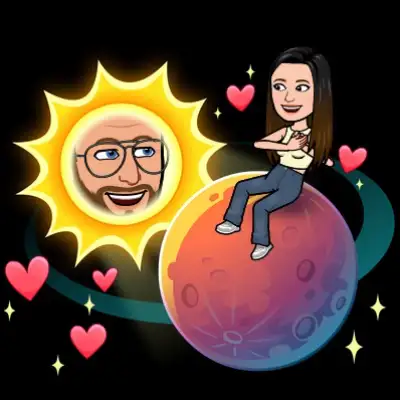
In real life:
This friend sees you as their digital bestie — someone they’re emotionally close to, trust deeply, or spend most of their online time with.
2. Venus – Rank #2
Venus is still extremely close to the Sun, but it comes just after Mercury. You may have slightly less interaction, or your communication is a bit more periodic.
What it means:
- You chat and share content regularly.
- There’s a high level of comfort and trust.
- You might not maintain a streak, but your communication is consistent and personal.
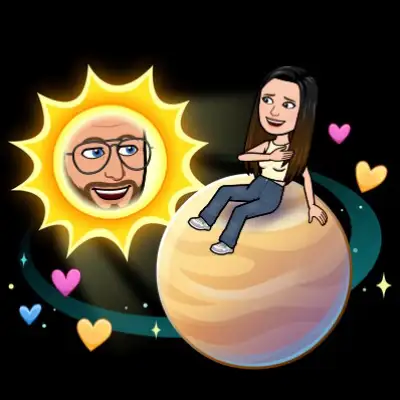
In real life:
You’re their second-best digital friend, possibly a close classmate, cousin, sibling, or romantic interest.
3. Earth – Rank #3
As Earth, you’re still in the core circle — someone they engage with enough to maintain a high rank.
What it means:
- You have regular conversations, often through group chats, memes, or weekend planning.
- Your streak may not be daily, but it’s still recent.
- You’re more of a “comfortable presence” than a top priority.
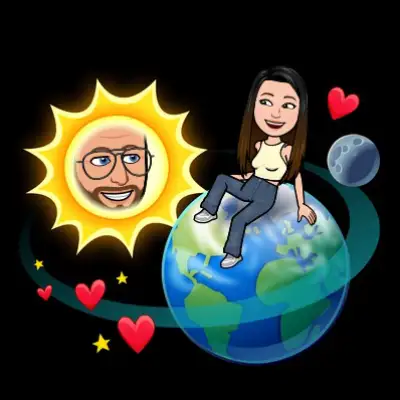
In real life:
Think of this as the friend you always include in plans, but not necessarily your go-to for everything.
4. Mars – Rank #4
Mars shows a shift from inner circle to steady companion. You’re someone they interact with frequently but casually.
What it means:
- Most of your communication is light, fun, and maybe meme-heavy.
- You may appear in group stories, but personal chats are less frequent.
- There’s a good connection, but it’s not as emotionally deep.
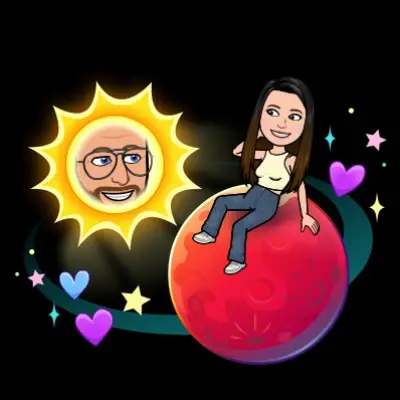
In real life:
A reliable friend — always fun to talk to, but not someone you turn to in a crisis.
5. Jupiter – Rank #5
Jupiter represents the start of the outer friend circle — still important, but less personal and more group-based.
What it means:
- Most of your interaction happens in group chats.
- Rarely do you have private Snaps or long chats.
- You may occasionally reply to stories or react with emojis.
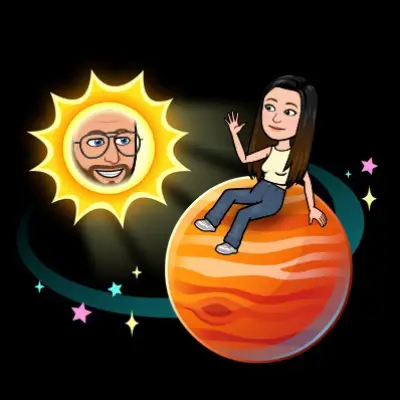
In real life:
A friend from college, a coworker, or someone you used to be close with, but have drifted apart.
6. Saturn – Rank #6
As Saturn, you’re now in a low-engagement tier. The connection is there, but it’s occasional and often one-sided.
What it means:
- You talk once in a while — maybe once a week or less.
- You might get a birthday message or respond to a story now and then.
- You’re still noticed, but not prioritized.
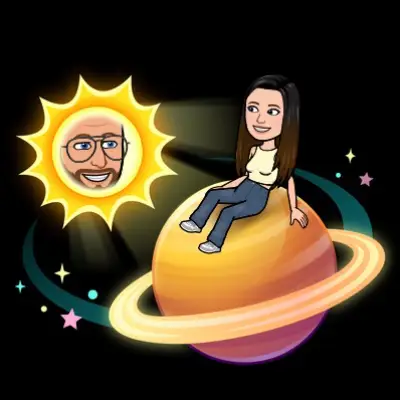
In real life:
You’re on the fringes of their digital life. Still part of their world, but not essential to it.
7. Uranus – Rank #7
Now you’re nearing the edge of their solar system. Interaction is minimal and likely passive.
What it means:
- You may not have chatted in days or even weeks.
- Your name appears because of past interactions, not current ones.
- There’s little to no emotional engagement.
In real life:
An old classmate, distant cousin, or someone they followed back and briefly interacted with.
8. Neptune – Rank #8 (Farthest Orbit)
This is the most distant rank, yet you’re still in their top 8 — which means something.
What it means:
- You barely interact anymore.
- You may have had a closer bond in the past.
- Your ranking is probably based on past activity or occasional check-ins.
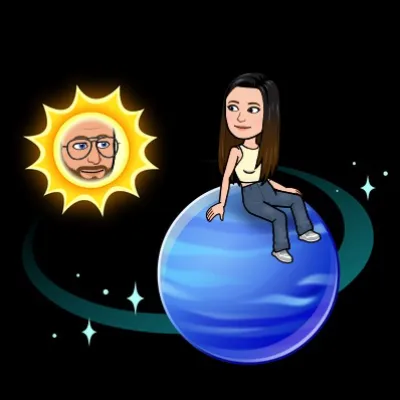
In real life:
A friend from a previous phase of life — important once, but now only a faint connection remains.
- If you appear as any planet in someone’s solar system, it means you still matter in their digital life — even if you’re Neptune.
- Snapchat’s algorithm is fluid — your planet ranking can change weekly, depending on interaction patterns.
- If you don’t see any planet on a friend’s profile, that means you’re not in their top 8 — and that’s okay. The system is meant to be dynamic, not absolute.
How to See Your Planet in a Friend’s Snapchat Solar System
Want to know where you stand in someone’s Snapchat universe? Here’s a step-by-step guide to check which planet you are in a friend’s Solar System using Snapchat+.
1. Snapchat+ Subscription is Required
This feature is exclusive to Snapchat+ subscribers. If you’re using the free version of Snapchat, you won’t be able to access the Planets feature.
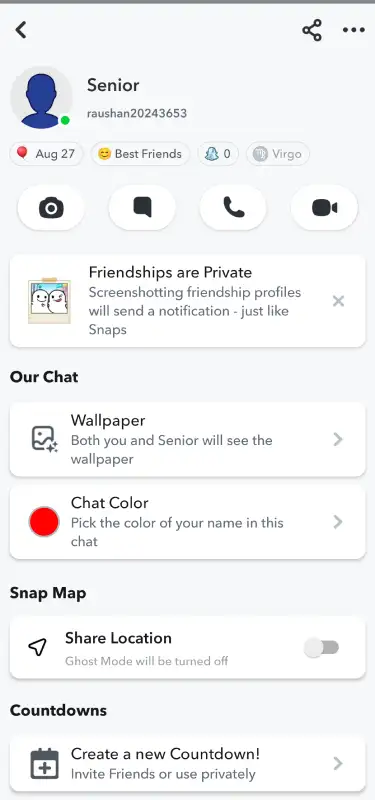
Make sure you have an active Snapchat+ subscription before trying to view the Solar System.
2. Go to Your Friend’s Profile
Open Snapchat and navigate to the profile of the friend whose Solar System you want to explore.
Keep in mind: You will only appear as a planet if you are among their top 8 best friends.
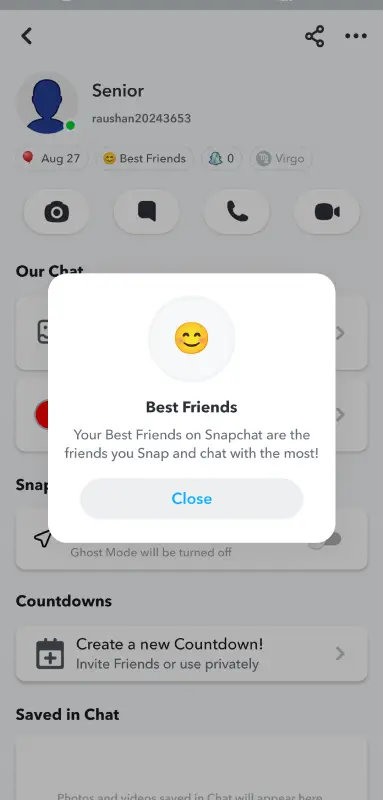
3. Tap on the “Best Friends” or “Friendship” Badge
On their profile, look for a badge labeled either “Best Friends” or “Friendship”. This badge usually contains a symbol or indicator related to the Solar System feature.
Tap on it to proceed.
4. View the Solar System
After tapping the badge, an animated Solar System will appear:
- Your friend is shown as the Sun at the center.
- Their top 8 friends are displayed as planets orbiting around them.
Your planet will be highlighted, showing your rank in their list — ranging from Mercury (closest) to Neptune (farthest).
Additional Notes:
- If you don’t see any planet, it means you are not currently in their top 8 best friends.
- If your friend is not a Snapchat+ subscriber, this feature will not be available on their profile, even if you have Snapchat+.
Why Does the Snapchat Planets Feature Matter
Snapchat Planets is one of those features that feels both fun and slightly personal. But before you start overanalyzing your position in someone’s solar system, here’s a breakdown of what actually matters — and what doesn’t.
It’s Just for Fun
The Planets feature is a gamified way to visualize your closest friendships on Snapchat. It’s designed to be playful, not emotional.
Being a certain planet doesn’t reflect how much someone truly values you in real life — it’s just a representation of app-based interaction.
It’s a Snapchat+ Exclusive
This feature exists primarily as part of Snapchat’s premium strategy. It’s a perk for Snapchat+ subscribers, designed to make the paid version of the app feel more interactive and feature-rich.
It’s Dynamic and Algorithm-Based
The planetary positions are not fixed. Your rank in someone’s Solar System can change weekly, depending on how much you’re interacting with them.
If you start chatting more with a particular friend, your position can shift from Neptune to Mercury — or the other way around.
Don’t Take It Too Seriously
At the end of the day, this is just an algorithm calculating who you chat with most.
It doesn’t measure emotional connection, loyalty, or real-world importance.
So if you find yourself ranked as Neptune, it doesn’t mean your friend dislikes you — it simply means you haven’t interacted as much on the app lately.
Use the Snapchat Planets feature for what it is — a lighthearted way to explore your digital friendships, not a judgment on your real-life relationships.
Tips and Tricks: Making the Most of Snapchat Planets
While Snapchat Planets is mostly a fun and visual feature, there are a few tips that can help you explore it better—or choose how you want to interact with it. Here’s what you should know:
1. Explore Multiple Profiles
Curious about how different friends rank you in their social universe?
Visit the profiles of your close friends (who have Snapchat+) and check the Friendship badge to see where you stand in their Solar System.
You might be surprised to find you’re closer to some people than you expected.
2. Increase Interaction (If It Feels Natural)
If you want to appear higher in a friend’s ranking—like moving from Neptune to Mercury—try increasing your interaction:
- Send more Snaps
- Start conversations
- React to their Stories
- Maintain Snapstreaks
But remember: Don’t force it.
True connections are built on genuine interaction, not just algorithmic engagement.
3. Be Mindful of Privacy
The Planets feature reveals how much you’re interacting with someone, from their perspective.
If you’re someone who prefers to keep your Snapchat usage more private—or if you don’t want certain friends to know how often you engage—this might not be the ideal feature for you.
Consider the following:
- You can choose not to subscribe to Snapchat+ if you want to avoid being ranked.
- Snapchat doesn’t allow you to disable the feature individually—so being mindful of your subscription and interactions is key.
Latest 2025 Updates – A New Year, New Features
Snapchat has taken its Friend Solar System and the overall Snapchat+ experience to the next level in 2025. With major feature rollouts focused on AI, personalization, analytics, and privacy, the Planets feature is no longer just a fun visual—it’s becoming a deeply interactive social tool.
AI-Powered Insights
Snapchat has integrated advanced AI to offer deeper, more personalized feedback on your friendships:
- Friendship compatibility scores based on shared behaviors and interaction patterns
- Conversation mood analysis to understand the emotional tone of your chats
- “Best time to Snap” suggestions to improve engagement
- Relationship health indicators, offering tips on maintaining strong digital connections
Visual Enhancements
The solar system visuals are more dynamic and personalized than ever:
- 3D animated planets that orbit in real time
- Seasonal planet themes, including festive editions (such as Diwali-themed planets)
- Custom planet colors based on the tone of your friendship (e.g., playful, serious, chill)
- AR planet viewer, allowing you to view your Friendship Solar System using your phone’s camera in augmented reality
Enhanced Analytics Dashboard
For Snapchat+ users who love data, 2025 brings a full analytics suite:
- Weekly friendship reports summarizing your top interactions
- Heatmaps showing when and how often you engage with friends
- “Friend of the Month” badges to celebrate consistent connections
- Nostalgia trips, showing throwbacks like “One year ago today” highlights in your chats
Privacy & Control Updates
With more data comes more control. Snapchat has introduced privacy-centric features to let users manage what’s visible:
- Granular visibility controls, allowing you to choose who sees what
- Ghost Mode for planets, so you can appear invisible in others’ solar systems
- Anonymous viewing options for checking friend rankings discreetly
- Data download tools, letting users export their interaction history if needed
These updates reflect Snapchat’s ongoing push to blend fun with functionality, giving users deeper insight into their digital relationships—while still maintaining control over their privacy and experience.
Subscription Tiers – Is Snapchat+ Worth the Money?
With the expansion of Snapchat+ in 2025, users now have multiple subscription tiers to choose from — each offering varying levels of features, insights, and customization.
Here’s a breakdown of the current pricing and what you get with each plan:
2025 Snapchat+ Pricing Structure
| Tier | Monthly Price | Features Included | Ideal For |
|---|---|---|---|
| Snapchat+ Basic | ₹199 | Core features like Snapchat Planets, limited customization, and early access | Great for new users exploring premium features |
| Snapchat+ Pro | ₹399 | Includes AI-powered insights, advanced analytics, and friend activity reports | Perfect for active users and social media enthusiasts |
| Snapchat+ Premium | ₹599 | All features unlocked: ad-free experience, exclusive themes, AR planet viewer | Best for users who want the full experience with no limits |
Free vs Paid: What’s the Real Difference?
| Feature | Free Version | Snapchat+ Version |
|---|---|---|
| Best Friends List | Simple text format | Visual “Friend Solar System” with planets |
| Analytics | None | Weekly reports, interaction heatmaps, AI suggestions |
| Customization | Very limited | Themes, icons, planet styles, AR support |
| Ads | Shown regularly | Removed (Premium only) |
Is It Worth It?
- If you use Snapchat daily, especially to interact with close friends, maintain streaks, or follow engagement patterns — Snapchat+ can add real value to your experience.
- If you’re a casual user who only opens the app occasionally, the free version is likely enough.
- Snapchat+ is about enhancing how you understand and visualize your connections. The return on investment depends on how deeply you’re involved with the app.
Troubleshooting – When Snapchat Planets Don’t Work as Expected
Even the best features can occasionally run into issues. If your Snapchat Planets aren’t displaying correctly or the system feels off, here are some common problems and how to fix them.
Issue 1: Planets Not Updating
Possible Causes:
- Your Snapchat+ subscription may have expired.
- Temporary server lag or syncing delay.
Solutions:
- Confirm that your Snapchat+ subscription is active.
- Wait up to 48 hours for changes to reflect.
- Restart the app and ensure it’s updated to the latest version.
- For Android users: Try force closing the app and clearing the cache from device settings.
Issue 2: Incorrect Planet Order
Possible Causes:
- The algorithm is recalibrating due to recent changes in your interaction behavior.
- A delay in data sync or activity tracking.
Solutions:
- Maintain consistent interaction with the friend in question for at least 3–4 days.
- Be patient—Snapchat’s ranking adjusts based on ongoing behavior.
- Reality check: The algorithm may be accurate—your friendship rank might have genuinely shifted.
Issue 3: Missing Planets
Possible Causes:
- You or the other user don’t have enough mutual best friends.
- Privacy settings might be hiding solar system data.
Solutions:
- Expand your interaction circle—Snapchat requires a certain number of close contacts to show all planets.
- Review your privacy settings and ensure the Friend Solar System visibility is enabled.
Issue 4: Friend Can’t See Your Solar System
Possible Causes:
- Either your privacy settings restrict visibility, or your friend doesn’t have Snapchat+.
Solutions:
- Go to your profile settings and adjust visibility for Snapchat Planets.
- Your friend must also be a Snapchat+ subscriber to view your position in their solar system.
Conclusion
Snapchat Planets offer a creative and entertaining way to visualize your friendships through a cosmic lens. By turning your closest connections into planets orbiting a digital solar system, Snapchat gives users a fresh, gamified way to understand interaction dynamics.
But while this feature might be fun to explore—whether you’re Mercury (closest) or Neptune (a bit distant)—it’s important to remember that these rankings are algorithm-driven. They reflect digital activity, not the true depth of your real-life relationships.
If you’re a Snapchat+ subscriber, go ahead and explore where you stand in your friends’ solar systems. If not, now you at least know what this whole “planet” trend is all about.
Enjoy the feature, explore your social orbit, but always remember: real friendships are built on trust and connection—not just snaps and rankings.
Frequently Asked Questions
What is the Snapchat Planets feature?
Snapchat Planets is a Snapchat+ exclusive feature that shows your top 8 friends as planets orbiting around you — the Sun — based on how often you interact with them on the app.
How do I access the Snapchat Planets feature?
You need a Snapchat+ subscription. Then, visit a friend’s profile and tap the “Best Friends” or “Friendship” badge to view the Solar System. You’ll only see your planet if you’re in their top 8 friends.
What does each planet mean in the Snapchat Solar System?
Each planet (Mercury to Neptune) represents your ranking in your friend’s top 8.
Mercury = #1 (Closest friend)
Venus = #2
…
Neptune = #8 (Most distant top friend)
The closer the planet is to the Sun, the more you interact.
Can I see who I assigned as planets in my Solar System?
No — Snapchat Planets is one-way only. You can only see how you rank in your friend’s Solar System, not how they rank in yours.
How often does my planet position update?
The ranking is dynamic and updates regularly (usually every few days) based on:
Snaps sent/received
Chats
Story views/replies
Calls, reactions, etc.
Why don’t I see any planets on a friend’s profile?
Possible reasons:
You’re not in their top 8 friends
They’re not a Snapchat+ subscriber
They’ve enabled privacy settings to hide the Solar System
There’s a temporary sync issue (try again later)
Can I hide my planet from others?
Yes — Snapchat+ includes privacy controls like:
Ghost Mode for Planets
Limiting visibility of your solar system to others
You can find these under your Snapchat+ settings.
Does being a certain planet mean my friend likes me more/less?
Not necessarily. The planets reflect digital interaction frequency, not emotional closeness. It’s a fun visual tool, not a judgment of real-life friendship.
Can I change or customize the planet I appear as?
Not directly. Your planet is automatically assigned by Snapchat’s algorithm based on interaction. However, you can move up the ranks by interacting more consistently.
Do Snapchat Planets work in group chats?
Yes, group interactions (like sending messages or replying in a group) do count — but private, one-on-one interactions usually have more weight in determining your rank.
Is Pluto ever used in the Snapchat Planets feature?
Nope — just like in the official solar system, Pluto is not included. Only the 8 main planets (Mercury to Neptune) are used.
Will my friends know which planet I see them as?
No, they won’t. The planet assignment is only visible to you when viewing their profile — it’s not publicly shown or shared.
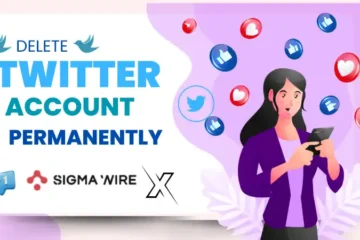

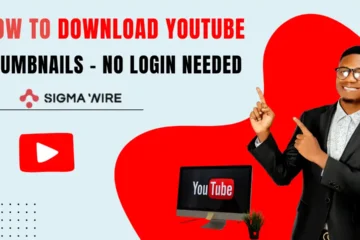
I enjoy your piece of work, regards for all the interesting content.